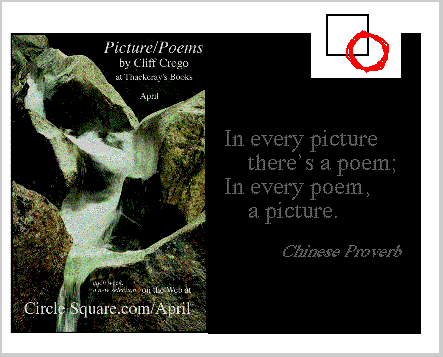
|
May 2002:
suggested link
An
Interview with Permaculture
founder Bill Mollison:
[in two parts]
by Scott Vlaun and the Seeds
of Change eNewsletter
"conscious design and maintenance of
agriculturally productive ecosystems
which have the diversity, stability,
and resilience of natural ecosystems."
|
From the Seeds
of Change eNewsletter:
http://store.yahoo.com/seedsofchange/
An Interview with Permaculture founder Bill Mollison:
[in two parts]
by Scott Vlaun
Part
I:
"In the1960's and 70's Bill Mollison, and later with David Holmgren,
developed the concepts of permaculture, (derived from the words
"permanent" "agriculture" and "culture,"). In 1978 the seminal work
"Permaculture One" was written, with "Permaculture Two" to follow
a year later. By 1981 the graduates of the first permaculture workshop
set out to make a difference in the world. Since then, Mollison and
countless
acolytes have spread permaculture principles throughout the world while
developing thousands of sustainable systems and creating a model for
ecological design and development.
"Recently declared "Ecologist of the Century" in Australia, Mollison
conceives
permaculture as the "conscious design and maintenance of agriculturally
productive
ecosystems which have the diversity, stability, and resilience of natural
ecosystems."
and "the harmonious integration of landscape and people..." permaculture
design he
points out, stems from "protracted and thoughtful observation rather than
protracted
and thoughtless labour:" In short, its goals are energy and water
conservation,
sustainable local food production and regional self-reliance. As conceived
by
Mollison, permaculture is nothing less than a "sustainable earth-care
system"
capable of providing our food, energy, shelter, and other needs while
conserving
the world's resources.
Mollison describes
Permaculture as . . .
"conscious
design and maintenance of agriculturally productive
ecosystems which have the diversity, stability, and resilience
of natural ecosystems."
|
Part
II:
[...] "One of my students married permaculture to his computer
and he has programs
that let him pull down properties from archives kept by the state. He can
plan
all the water for the farm and tell you how much it will be to make your
dams
and how many thousands of gallons or megaliters you've got in each one; how
much your fence will be; he'll plant all your trees for you; he'll plant
them on
mounds; he'll put mouseproof and rabbitproof collars around them all. He
invests, on behalf of people buying farms, probably a hundred million
dollars
a year at present. So he does hundreds of farms; he's always got 20 or 30
going.
He's got a full-time surveyor; And then he's got a big nursery backing that
up and
very large teams of planters. So he does a lot. He's the future of
permaculture.
The near future. The present of permaculture. So, in his short life, in Victoria,
after
I trained him (he doesn't have a degree or anything), he has put in more
forests
and more farms than anybody in the history of Australia and he has decided
the
future of hundreds of thousands of acres of land. And that's how I'd have
all my
students go. But in America, they seem to be going more woo woo every day,
more into the theories . . . [...]
Mollison: "Well, take Vietnam. We went in there at a critical point
when they
weren't finished, the army was being immobilized; all the soldiers were
becoming
farmers but some had been fighting for 40 years so they didn't know much
about
farming. So I went in and just traveled slowly through the country. Some
of my
students had been teaching courses and reported being overwhelmed with
requests
for courses. And then the people who controlled the country said to me, "Could
we
have your book, Introduction to Permaculture." I said, "What do you plan?"
They said,
"We're going to translate it into Vietnamese and give it out, free to the
farmers, and
tell them that's our policy now because it's organic and it works for what's
there. We
don't have the money to bring in a lot of other stuff." I said, "Of course
you can." So
they printed 140,000, gave one to every farmer, and said, "This is it. We're
going
organic." And so they did.
"But, I forgot and they forgot that my photograph's on the back cover. Now,
every
farmer in Vietnam knows me. No matter where I am, "Hi Bill!" [...]
Other unrelated, but interesting links . . .
NetFuture:
Technology and Human Responsibility
website and newsletter by Steve Talbott
"NetFuture is "a largely undiscovered national treasure" (Peter J.
Denning, New York Times,
November 25, 1999). Here is what other readers have said about NetFuture.
"NetFuture is an electronic newsletter with postings every two-to-four weeks
or so.
It looks beyond the generally recognized "risks" of computer use such as
privacy
violations, unequal access, censorship, and dangerous computer glitches.
It seeks
especially to address those deep levels at which we half-consciously shape
technology
and are shaped by it. What is half-conscious can, after all, be made fully
conscious, and
we can take responsibility for it.
SLEEPWALKING
WITH OUR COMPUTERS
The Machine's Threat Lies in Our
Absence
[...] "Computerized technology, whether in education, banking,
or telephone
answering systems, does indeed mimic us. But what it mimics is our
unwillingness
to be there, our passive yielding to whatever is "given" by The System, our
failure
to assume personal responsibility in the present moment and to step outside
all the
deterministic mechanisms running on by themselves. It mimics, finally, our
refusal
to respond in freedom and with presence of mind to the human beings standing
in
front of us." [...]
Steve Talbott is the author of "The Future Does Not Compute
-- Transcending the
Machines in Our Midst" (O'Reilly, 1995). He is also moderator of the
NETFUTURE
forum on "Technology and Human Responsibility for the Future."
| Picture/Poem Link Archive
2001 |
| back to
Picture/Poems: Central
Display |
|
Central Display |
Map
|
TOC:
I-IV |
TOC:
V-VIII |
Image
Index |
Index |
Text Only
| Download
|
Newsletter
|
About
P/P |
About Cliff
Crego
|
(V.19.2002) Comments to
crego@picture-poems.com
